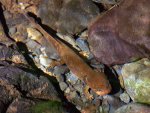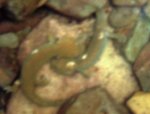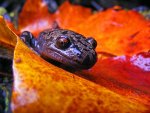it's funny, you can tell how little traffic the Dicamp threads get because the specificity of hunting locations on this thread is pretty high...
I'm not trying to get on anybodies case, I'm just observing that the moderators apparently don't read this thread.
Anyway, if you like Dicamps enough to be in this thread than you probably have respect for the creatures... besides, they are ridiculously hard to find as adults... chances are, even if you knew a good location it would all be luck in the end. I lived in prime habitat next to a stream with water year round in redwood forest and still have never found an adult in the 4 years of hiking and log flipping i did when i lived there... larvae, sure... Red legged frogs which are supposed to be rare were abundant. I could find Aneides vagrans under my house but never adult Dicamps.



